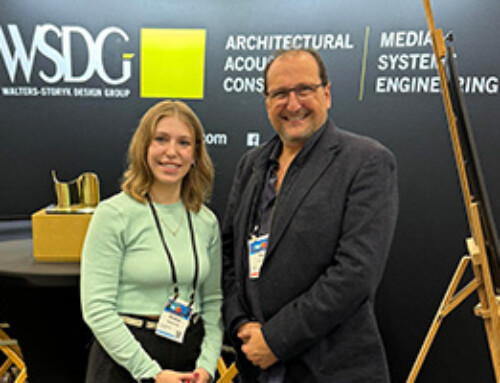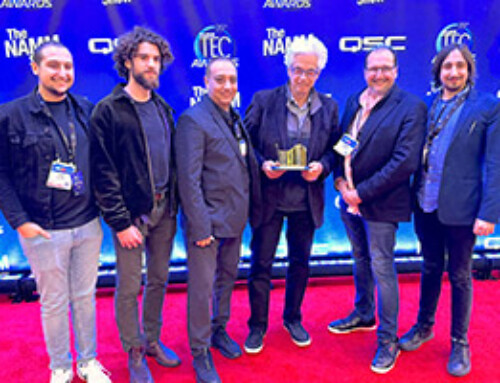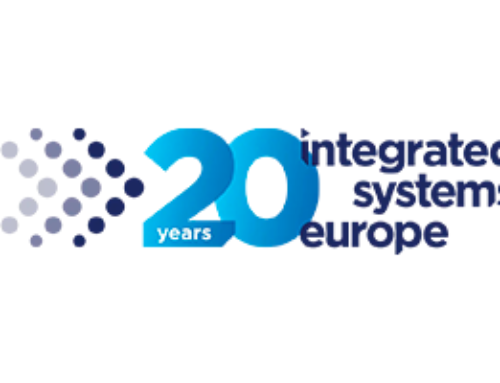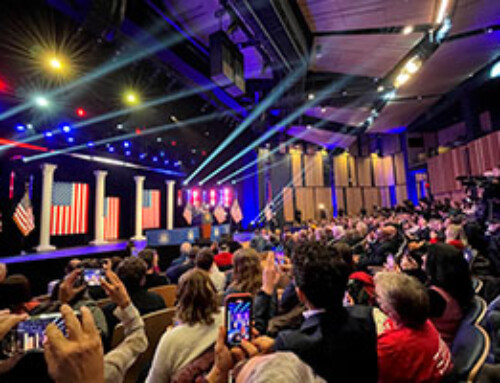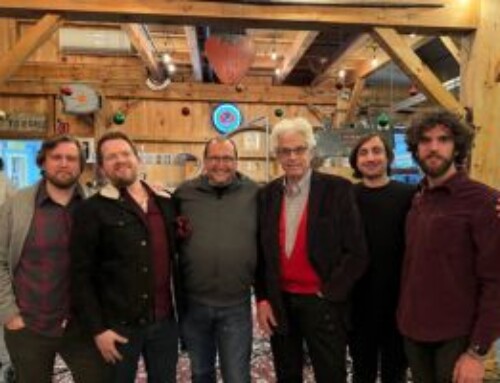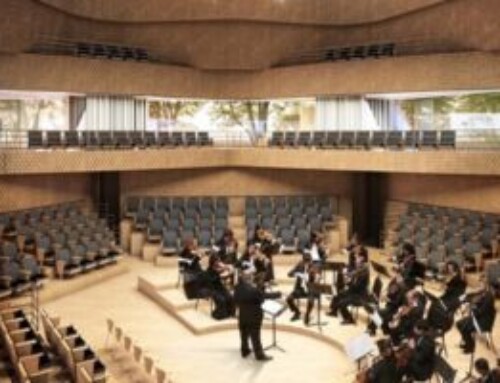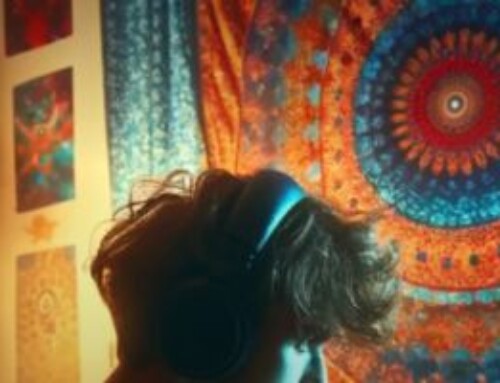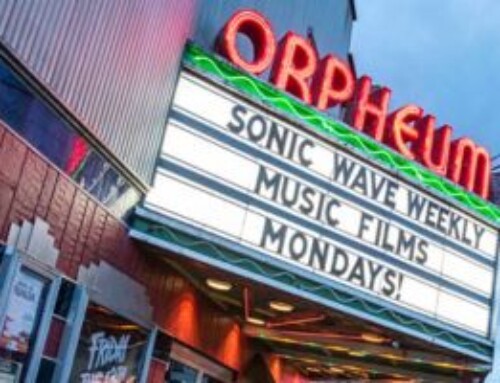by Jeff Touzeau
When Electric Lady was completed and opened its doors for the first time over 37 years ago, it was a beacon for creativity and innovation. For starters, it was one of the first artist-owned recording facilities in the world, designed and built to exact specification for none other than Jimi Hendrix. This is a very interesting fact to note since the tables have turned: we now find ourselves in an age where the number of artist-owned facilities vastly outweighs the number of commercial studios. Jimi’s vision for Electric Lady was very concise: he wanted to build a studio that could compete with any other studio in the world both technically and acoustically, but he wanted an environment that was inspiring and comfortable to create music—a stark departure from the more clinical looking studios of the day.
Jimi and his manager Michael Jeffery entrusted their wishes to a young architect from Princeton named John Storyk. It was Storyk’s first design and one that would spark the trajectory for a career that would have lasting effect in the world of acoustic design. When Electric Lady opened in 1970, there was great fanfare in the music community. A flyer described Storyk’s design as “…promoting a feeling of casual comfort bordering on informal luxury.” Electric Lady went on to host countless influential artists from both sides of the Atlantic; legends like Stevie Wonder, Led Zeppelin and the Rolling Stones to name just a few.
With such an illustrious history, one might be led to believe that the studio’s long-term success was all but guaranteed—however, this was not to be. A slowdown in studio rentals permeated the entire recording studio industry during the 1990’s and by the time 9/11 came around, Electric Lady had quietly become a technically outdated artifact of the past. Bookings were down and the facility was in desperate need of care and attention.
From Graveyard to Beehive
Lee Foster grew up on a farm in Tennessee. Following graduation from college, he wanted to come to New York to pursue his dream in music. Serendipitously, he was offered a job sweeping floors at Electric Lady Studios and after doing his time, was eventually offered a job as studio manager–which he graciously accepted. While speaking to Foster today, it becomes immediately clear that working at Electric Lady was never a job—it was his passion and he was prepared to fully commit himself to the ultimate success of the studio. “When I started here, I felt there had been a great deal of neglect—changes happening within the industry certainly weren’t helping. I just tried to make it a solid recording studio again,” he modestly recounts.
Foster and Mary Dandola, his business partner who handles the finances and legal aspects of the business, wasted no time assembling a dynamic young team around them to help bring Electric Lady closer to what Hendrix likely would have wanted it to be: an innovative, creative ‘beehive’ for artists. One of the first things Foster did was to hire two renowned techs from New York’s Hit Factory, which had recently closed its doors several blocks away. He and his crew then began carefully renovating and upgrading the facility from the ground up, while leaving its hallowed infrastructure fully in tact.
When the work commenced, Electric Lady went into a sort of ‘strategic hibernation’–this afforded them time to refurbish the facility so it would be ready for the clients, who they felt would surely be lining up at the door soon enough. “We sort of went black,” Foster recalls. “I didn’t take any bookings until I knew that we could handle it. We needed to get the place cosmetically and technically ready, as well as work to get our new staff up to speed.” For Foster, the worst possible outcome would have been for an accomplished producer to arrive, have a less than perfect session, then leave thinking, “They’re not ready.”
‘Going dark’ was necessary to accomplish the refurbishing, but it also had a very positive effect on the studio’s public relations. “I made sure to take every phone call — telling them each that we had no availability,” Foster says. “Soon, a buzz began; ‘Electric Lady is booked all the time. You can’t even get in!’ people would say.” Little did they know, each of the facility’s three SSL 9000 series consoles were being gutted and cleaned by the techs while interns were frantically painting the walls of the interior.
The First Test-Drive
Once Foster and his staff felt Electric Lady was to the level it needed to be, he got a phone call. It was Ric Ocasek, the respected producer and former front man of The Cars; he heard through the grapevine that Electric Lady was open for business and wanted to book a project for a group he was working for on called The Pink Spiders, who were signed to Geffen. The pressure was on and this was the real deal. “I knew we had to get everything right,” Foster says, recognizing the pivotal importance of the session for the studio’s future. All the hard work appeared to pay off: “It went amazingly well and Ric was very, very pleased.” Following the success of that session, Foster and company knew they could handle anything so they wasted no time bringing in other artists. Albert Hammond, Jr. album came in and recorded his critically acclaimed album Yours to Keep. Muse came in to record part of Black Holes and Revelations. Even Axl Rose came in to record for the deeply mysterious Chinese Democracy (yes, apparently it exists and Foster insists it is quite good).
Electric Lady was on a roll—and was on its way to becoming much more than just a ‘village’ studio. Soon Steve Earle, Foo Fighters, Interpol, Patti Smith and Ryan Adams all came in. Many of these and other artists originally intended to book two week tracking sessions, but ultimately extended their sessions. “People will initially book two weeks, or so, but almost always extend by several weeks; if not months — Hell, Ryan Adams stayed for two years [laughs].” These days, no matter when you walk into Electric Lady, there is very likely a major project underway in any of its three rooms.
Re-Invigorating a World Class Facility
Technologically speaking, it was a long road before Electric Lady could get ‘back to the future’ where it belonged. Even in 2003, they were well behind their peers when it came to utilizing digital technology. “We were actually renting Pro Tools rigs for every session that came through–ridiculous for 2002 or 2003. So quickly we acquired Pro Tools rigs that were decked out with all the plug-ins anyone would ever need. Now we have a very good hybrid of the old and the new,” Foster says.
As far as consoles, Electric Lady still has its classic SSL 9000Js in every room accompanied by Augspurger monitors. Each room is also decked out with a dedicated Pro Tools HD3 system. “Where upgrades are concerned, our priority has been to keep the Pro Tools rigs up to date.” However, Foster is quick to note that some substantial acquisitions have been made with respect to outboard preamplifiers and equalizers. “In the past six months alone, we’ve acquired 14 vintage Neve pre/EQs [ten 1081s and four 1066s] in order to build our front end for the rock clients.” While Foster doesn’t consider himself to be a technical person, he is keenly aware of what artists crave: “I listen to the clients. If three of them consecutively come in and say, ‘You know, I really wish you had this,’ then I’m probably going to buy it.”
Don Dowdye, Chief Technical Engineer, ensured that all the equipment worked it should. “As a perfectionist, my approach is that everything has to be on, up, running 100% and rung out. That’s what I had to do for all the gear.” The SSL J’s needed some finessing but Dowdye contends they were in really good shape overall. “Our console in Studio B, which is our oldest, needed the most work which mainly involved tightening up a lot of wires and connections. We did not need a recap, but we needed to make sure that all the modules were fully functional.” Dowdye also oversaw a complete console calibration and a software upgrade to the latest SSL automation software. “Now you tell it to go to zero, it goes to zero and out comes +4.” The technical staff performed similar maintenance on the other consoles, which were slightly younger and therefore somewhat easier to deal with.
In addition to helping with key equipment acquisitions and dusting off its existing vintage outboard gear, Dowdye has taken great pains to develop a comprehensive library of manuals and schematics to advance the studio’s maintenance and repair capabilities. This is to ensure that anyone one the staff is able to access resources they need to identify and resolve a problem quickly should any anomaly or technical difficulty occur during a session.
As for the Augspurger monitors, “They are extraordinarily robust,” says Dowdye. “I can take pretty much any style of session and come away with working speakers.” He notes that some of his clients monitor very loudly, yet sonic detail remains in tact even at high volumes. “They project a great soundstage, good definition and I am particularly fond of studio A and B’s monitors because they have the original carved wooden horns. This delivers a nice presence that isn’t too harsh.”
All in all, Dowdye says that the infrastructure itself wasn’t all that bad—it was mainly equipment that had to be dealt with. “The separation, the wiring, the dimensions and the materials were all wonderful.” He also spent time working out the electronics and switching of the monitoring systems: “I did some upgrades and customizations to make sure we had good foldback and headphone monitoring systems in place both from the console and independent. We made sure that the nearfields and bigs were really solid—switching had to be just so.”
Electric Lady’s Enduring Design
While the crew ultimately had to spend a lot of time and effort on technology and equipment, something they didn’t have to mess with was the acoustics. “I believe John [Storyk] was only 23 when he designed it, which just blows my mind,” says Foster. “The rooms are tanks–absolutely fool-proof where acoustics are concerned. And aesthetically, Jimi definitely went for the spaceship vibe. There are lots of round, curved surfaces and it’s very colorful — very psychedelic.”
This spaceship vibe appeals to many artists including U.K. based super-group Muse. Rich Costey, producer of their masterpiece Black Holes and Revelations, explains the attraction: “I’d been to Electric Lady, but I hadn’t actually worked there before. I think all of us just wanted to work there, partly for the history of it and partly because I think the room is set up really well for those guys—it kind of feels like a giant spaceship, which worked well for the band because they are pretty inspired by outer space.” [laughs] Costey is quick to point out that despite the facility being steeped in history, Electric Lady’s technology is very much up to date. “In many ways, it’s a very, very modern studio. You don’t feel like you’re walking into 1969, unlike a certain studio on the west coast where you walk in and all the rooms, including the control room, are exactly how they were 30 years ago. Electric Lady’s control room is very modern and the lounge is ultra modern. Quite often, the lounge is where you find yourself being.”
The studio’s aesthetic quality was of critical importance to Hendrix. In fact, he specified that he didn’t want any right angles, so Storyk integrated curve motifs throughout: in the lobby, in the acoustic treatment in the ceiling, even on a distinctive exterior treatment visible from the entrance on 8th street, which has sadly not survived. “Obviously John built an amazing acoustic space, but he also implemented all these strange, curved surfaces that Jimi wanted,” Foster says. “Jimi probably wanted to feel like he was in a spaceship.”
As for the acoustic attributes of Studio A, Storyk says the volume of the studio, the slab on grade construction and the ceiling all played a vital role in its sound. “[The ceiling treatment] was kind of an air-entrained plaster and more or less a forerunner to a half-scattering and half absorbing surface. There is still something extraordinary about it when you hear it.”
John Storyk: Looking to the Future
As evidenced by the dozens of projects Storyk and his firm WSDG have around the world at any given time, it becomes obvious that he is not someone who relishes in his past or is easily consumed by nostalgia. After Storyk designed Electric Lady, he quickly moved on and never looked back. “I hadn’t been in Electric Lady in twenty years until about two years ago when they celebrated the 35th anniversary,” he says. “I was asked to join an Audio Engineering Society panel and declined at first, because I’m more of a forward-looking guy. But Eddie [Kramer] and some other people said ‘It doesn’t make sense to do it without you.’ I finally agreed and it was actually good for me because it got me to think about where we have all come from. Electric Lady was right on a seminal wave front and it was great to see it alive.” If Hendrix himself were to walk through the facility today, he would likely have little trouble finding his way around: “It was incredible to see how much was still there from 35 years ago! Some things are exactly where they were.”
Foster was happy to see the legendary studio designer interested and engaged in Electric Lady’s progress: “I am very, very fond of John–to me, he’s family. I’ll never forget him because as a young man stepping into all of this, he would always pick up the phone or be willing to come down and talk to me about things—his guidance has been extremely important. Now we talk all the time.”
37 years and 3,000 facilities later, Storyk is still guided by the same acoustic principles he drew from in 1968. He says great geometry, correct room proportions, creative selection of equipment, and just the right amount of reverberation are all key ingredients. “The room should be as reverberant as possible without conflicting standing wave proportions or frequency reflection anomalies. I’ve never come off those rules, which were taught to me by Eddie. I’ve just refined them.”
Extending its Reach into Tomorrow
Electric Lady has all the ingredients for lasting success: a timeless studio design, state of the art equipment, a talented staff and one of the most valuable brands in the business. However, Foster and the rest of his team are never content to rest on their laurels—especially considering the relentless industry pressures. “What’s happening to big studios has far less to do with home recording than shrinking budgets from the major labels. Our traditional customers, the record labels, are making far less money on sales and as a result their budgets aren’t what they used to be.” Foster says one way Electric Lady combats that is by building loyalty among existing clientele, something he refers to as the ‘beehive effect.’ Another way is to simply work harder than its peers. “Any time I see an empty room coming up on the schedule, I’m going to hustle my ass off and make sure that it’s full. I just don’t allow my rooms to sit empty.”
From a more strategic perspective, Electric Lady has set its sights on broader markets and a more international client profile. Countries such as the U.K. and Japan have been particularly attractive in light of the weak U.S. dollar—overseas acts can experience the heritage and luxury of a place like Electric Lady for a fraction of what it would normally cost. “The world is a much smaller place these days. Thankfully, reaching out with the name Electric Lady results in a willing audience — anywhere on the planet. This made a young man’s job much easier,” Foster observes.
From Dowdye’s perspective, there is an opportunity to work with clients who are technically more demanding: “We are certainly looking for higher maintenance clients—both in the customer service and the technical aspect.” This is especially true as they evolve their operation towards 5.1 and beyond, while becoming more involved in video production work. “We want the most demanding, big-desk clients to feel comfortable here, and they do.”
When asked what the essence of clients’ attraction to Electric Lady is now, Foster’s answer comes very naturally. “It’s a hybrid of two things: the history and the vibe, both of which we hold true to. But more than that, we’re running this place from top to bottom in a very loving fashion — it’s something that people notice. I am sure that that’s what Jimi intended. It’s the beehive—people come back because its home.”

